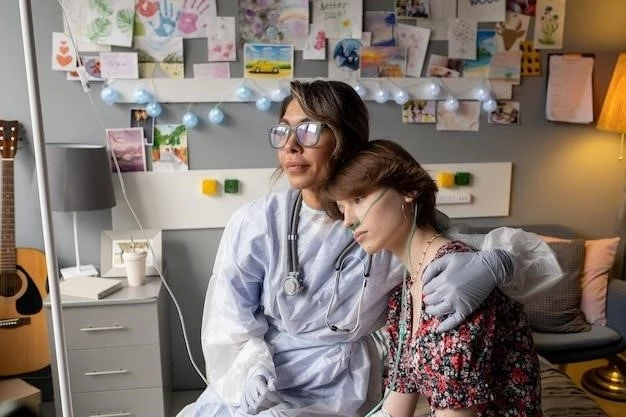Introduction
Meretoja syndrome, also known as hereditary gelsolin amyloidosis, is a rare genetic condition with severe ocular manifestations identified through lattice corneal dystrophy.
Overview of Meretoja Syndrome
Meretoja syndrome, also known as hereditary gelsolin amyloidosis, is a rare genetic condition predominantly affecting the eyes with distinctive ocular signs such as lattice corneal dystrophy. This autosomal dominant disorder is characterized by amyloid deposits in various tissues, leading to a range of symptoms that impact both ocular and neurological functions. The condition was first described in the late 1960s by Finnish ophthalmologist Jouko Meretoja and is associated with a specific gene mutation. Diagnosis of Meretoja syndrome is primarily based on clinical observations and may present challenges due to its rarity and varying manifestations.

Clinical Features
Meretoja syndrome presents with severe ocular and neurological symptoms. The hallmark is lattice corneal dystrophy, along with facial changes, dry eyes, and nerve palsies. It can affect various tissues, leading to complications impacting vision and quality of life.
Meretoja syndrome manifests with a range of severe ocular and neurological symptoms. The condition is primarily characterized by lattice corneal dystrophy, facial changes, dry eyes, pendulous ears, and various nerve palsies, impacting vision and overall health.
Manifestations of Meretoja Syndrome
Meretoja syndrome presents with a distinctive set of ocular and neurological symptoms, with lattice corneal dystrophy being a key feature. The disease is known for causing facial changes, dry eyes, pendulous ears, and nerve palsies, which can significantly impact the individual’s vision and overall well-being.
Diagnosis
Diagnosis of Meretoja syndrome relies on clinical features such as lattice corneal dystrophy, facial changes, and neurological symptoms. Observational assessment and genetic testing play crucial roles in confirming the condition due to its rarity.
Methods for Diagnosing Meretoja Syndrome
Diagnosing Meretoja syndrome involves a thorough evaluation of clinical manifestations, particularly lattice corneal dystrophy, facial changes, and nerve palsies. Observation of these signs, along with genetic testing to identify the specific gene mutation, is essential for confirming the diagnosis of this rare genetic condition.
Role of Genetic Testing in Diagnosis
Genetic testing plays a crucial role in diagnosing Meretoja syndrome by identifying the specific gene mutation associated with the condition. This testing is essential due to the rarity of the syndrome and its varied manifestations, aiding in confirming the diagnosis and guiding appropriate management strategies.

Epidemiology
Meretoja syndrome, also referred to as hereditary gelsolin amyloidosis, is a rare condition predominantly found in Finland, with around 400 to 600 reported cases in the country. Although it is rare outside Finland, a few cases have been documented in other regions such as Japan and the United States.
Prevalence of Meretoja Syndrome
Meretoja syndrome is a rare condition, predominantly found in Finland, with an estimated 400 to 600 reported cases in the country. While rare outside of Finland, a few cases have been documented in other regions such as Japan and the United States.
Affected Populations and Geographic Distribution
Meretoja syndrome primarily affects the Finnish population, with around 400 to 600 reported cases in Finland. While rare outside Finland, a few cases have been documented in other regions like Japan and the United States, highlighting its limited geographic distribution.
Pathophysiology
Meretoja syndrome, also known as hereditary gelsolin amyloidosis, is characterized by amyloid deposition in various tissues due to an autosomal dominant inheritance pattern linked to a specific gene mutation.
Mechanism of Amyloid Deposition in Meretoja Syndrome
In Meretoja syndrome, the mechanism of amyloid deposition involves an autosomal dominant inheritance pattern linked to a specific gene mutation. This leads to the accumulation of amyloid deposits in various tissues, including ocular structures, contributing to the clinical manifestations of the condition.
Genetic Basis of Meretoja Syndrome
Meretoja syndrome, also known as hereditary gelsolin amyloidosis, is caused by an autosomal dominant inheritance pattern associated with a specific gene mutation, leading to amyloid deposition in various tissues. The condition was first described by Finnish ophthalmologist Jouko Meretoja in 1969.
Treatment
Currently, there is no specific treatment available for Meretoja syndrome. Diagnosis allows for symptomatic management, focusing on addressing individual symptoms such as lattice corneal dystrophy and related ocular issues.
Current Approaches to Managing Meretoja Syndrome
Meretoja syndrome lacks a specific treatment; therefore, management is focused on addressing individual symptoms such as lattice corneal dystrophy and related ocular issues. Diagnosis allows for symptomatic treatment to alleviate specific manifestations of the condition.
Challenges in Treating Meretoja Syndrome
Managing Meretoja syndrome presents challenges due to the absence of a specific treatment. Addressing individual symptoms, especially lattice corneal dystrophy and related ocular issues, requires a multidisciplinary approach to improve the quality of life for affected individuals.
Prognosis
Meretoja syndrome’s prognosis is challenging due to the lack of a specific treatment. Managing symptoms and complications remains vital to improve the quality of life of individuals affected by this rare genetic condition.
Outcomes and Complications Associated with Meretoja Syndrome
Meretoja syndrome poses challenges due to the lack of specific treatment options. Managing symptoms is crucial to enhance the quality of life for affected individuals despite the complications associated with the condition.
Impact on Quality of Life
Meretoja syndrome’s impact on quality of life is significant due to the lack of specific treatment. Symptomatic management is crucial to address ocular and neurological manifestations, enhancing the overall well-being of affected individuals.
